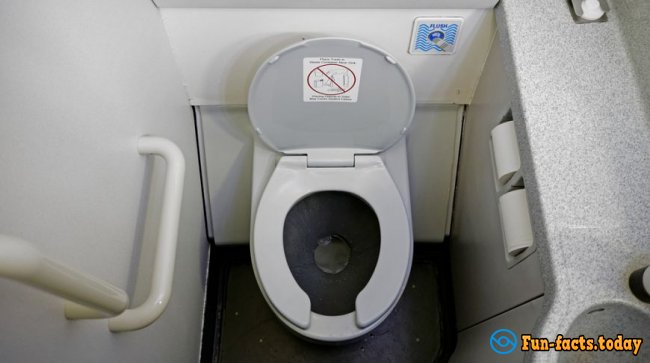Even if you fly by plane more frequently than go down in the subway and the board can call their second home, there are facts about restrooms, which you probably do not know. Read the most interesting things in our material.
The first toilets in airplanes were buckets
Previously, if a passenger of airliner had to relieve himself, he had to do it in a bucket with a lid. But despite this, in the UK in 1934 it was a plane, the toilet of which was opened to the outside. It would seem that what could be wrong with this system? Firstly, whistle, which was formed after the descent of the waste, and secondly, flying feces is at least not a good idea.
“Blue Ice” sometimes falls from airplanes
As to carry a cup of liquid sloshing during turbulence, not a good idea, many planes began to use the waste system with blue dispensing liquid. Using frozen wastes and sending them to the reservoir, where they are stored before planting. However, sometimes there is a leak, and the “Blue Ice” detached from the aircraft, falling to the ground. For example, one pair of Englishmen found in their garden ice fragments, from which they said came pungent smell. More than 30 cases of falling to the ground “blue ice” have been registered since 1979.
Restrooms for airplanes were invented in 1975.
The first one was established in 1982. They are called “vacuum toilets” and operate as follows: after draining waste fall into the sewer line and the vacuum sucks them in compartments in the rear panel of the aircraft. The toilets on airplanes do not spend a lot of water. Water saving device for toilet cisterns, which we use at home, in fact, does not retain water. To wash away the waste, is spending 6 liters of water. The aircraft, thanks to vacuum technology takes less than two liters.
The pilot can not reset the waste during the flight Even if the pilot wanted to dump waste from the aircraft during the flight, he would have failed, because the valve can be opened only on the ground
The water in the taps of the aircraft is really dirty
According to an article in the edition of the Wall Street Journal, published in 2002, the quality of the water in the taps on the board of an aircraft is much lower than the permissible norm. Reporters have appraised the water from 14 different flights of US airlines and have found in it salmonella, staphylococcus, and even insect larvae. Despite the fact that the Agency for the US Environmental Protection Agency says that now the water quality has improved significantly, it is better to avoid contact with the body.
Self-cleaning toilets may soon become a reality
Boeing has announced that it is studying a device that with the help of ultraviolet radiation is able to remove 99.9% of bacteria in the toilet for 3 seconds after each use.














